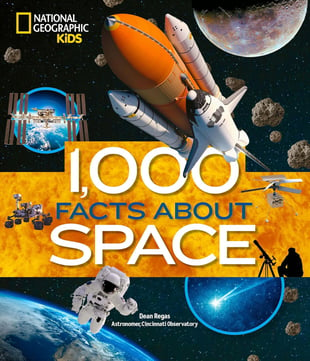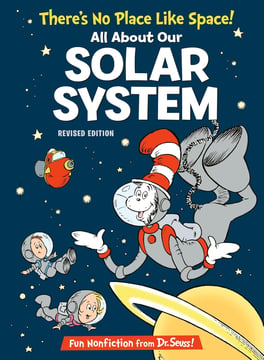
10 Amazing Space Facts That Will Blow Your Mind
Space is vast, mysterious, and full of surprises. While we've come a long way in our understanding of the cosmos, the universe continues to amaze us with its grandeur and complexity. Here are 10 mind-blowing space facts that will blow your mind and leave you wondering just how much we still have to learn about the great unknown.
FACTS


1. There Are More Stars in the Universe Than Grains of Sand on All the Earth's Beaches
When you gaze up at the night sky, you're only seeing a fraction of what's out there. In fact, scientists estimate that there are around 100 billion galaxies in the observable universe, and each galaxy can contain hundreds of billions of stars. This means the number of stars is incomprehensibly large—far more than all the grains of sand on Earth. In the Milky Way alone, there are roughly 100 billion stars, and new stars are being born all the time.
2. A Day on Venus is Longer Than a Year on Venus
Venus is a fascinating planet for many reasons, but one of the most mind-boggling facts is that a single day on Venus—the time it takes for the planet to complete one full rotation on its axis—lasts 243 Earth days. However, a year on Venus—the time it takes to orbit the Sun—lasts only 225 Earth days. This means that a day on Venus is longer than its year! The planet also rotates in the opposite direction of most planets, so on Venus, the Sun would rise in the west and set in the east.
3. A Black Hole Isn’t Actually a Hole
Despite its name, a black hole isn’t a hole at all. Rather, it’s a region of space where the gravitational pull is so strong that nothing, not even light, can escape. Black holes form when massive stars collapse under their own gravity at the end of their life cycle. The boundary around a black hole is called the event horizon, and once something crosses it, there’s no way to get back out. Black holes are often depicted as "vacuum cleaners" of space, but in reality, they are extremely dense objects that warp space-time itself.
4. Space Isn’t Completely Empty—It’s Filled with “Dark Matter” and “Dark Energy”
It’s easy to assume that space is a void, but it turns out that around 85% of the mass in the universe isn’t made up of ordinary matter like planets, stars, and dust. Instead, it’s composed of dark matter, an invisible substance that we can’t detect directly but whose presence is inferred by its gravitational effects on visible matter. Similarly, dark energy makes up about 70% of the universe's total energy content and is thought to be responsible for the accelerated expansion of the universe. These two mysterious entities remain some of the greatest unsolved puzzles in modern physics.
5. The Largest Known Star Is So Big, It Could Fit Over 1 Billion Suns Inside
(Image credit: European Southern Observatory)
Meet UY Scuti, the largest known star by radius and volume. This red supergiant star is located about 9,500 light-years away in the constellation Scutum. UY Scuti’s diameter is estimated to be about 1,700 times larger than the Sun’s. If you could place UY Scuti in the center of our solar system, it would extend all the way out to the orbit of Jupiter! It's hard to imagine such massive scale, but UY Scuti is only one of the many gigantic stars scattered across the universe.
6. There’s a Planet Made of Diamonds
If you thought diamonds were rare and precious, wait until you hear about 55 Cancri e, a planet located about 40 light-years away from Earth. This exoplanet is believed to be rich in carbon, and scientists suspect that much of it is in the form of diamond. The planet’s high pressure and temperatures—about 4,000°F (2,200°C)—may cause carbon to crystallize into diamond. While it’s unlikely that anyone will be able to mine these diamonds anytime soon, the idea of an entire planet made of the precious stone is truly fascinating!
7. There Are More Habitable Planets Than You Might Think
For decades, scientists have searched for planets that might support life, and while Earth remains the only known planet with confirmed life, recent discoveries have revealed that there could be a staggering number of habitable planets in the Milky Way alone. The Kepler Space Telescope has found thousands of exoplanets, some of which are in the "habitable zone"—the area around a star where conditions may be just right for liquid water to exist. Some researchers believe that there could be as many as 40 billion Earth-sized planets orbiting in the habitable zone in our galaxy alone.
8. You Could Weigh Less on the Moon Than You Do on Earth
Ever wondered how much you would weigh on the Moon? Since the Moon’s gravity is only about 1/6th of Earth's, you’d weigh a lot less. For example, if you weigh 180 pounds (82 kg) on Earth, you would only weigh about 30 pounds (14 kg) on the Moon. This is because the Moon’s smaller size and lower mass result in a weaker gravitational pull compared to Earth’s. Imagine what it would feel like to jump six times higher and move with ease in this low-gravity environment!
9. Space Is Expanding, and It’s Getting Faster
In the 20th century, astronomers discovered that the universe is not static but is actually expanding. What’s even more astonishing is that the rate of expansion is accelerating, not slowing down. This mysterious phenomenon is thought to be driven by dark energy, a force that counteracts gravity and pushes galaxies apart. The expansion of the universe was first observed by astronomer Edwin Hubble in 1929, and it has since led to the development of the Big Bang theory, which suggests that the universe began as a singularity and has been expanding ever since.
10. Neutron Stars Are So Dense That a Teaspoon Would Weigh More Than a Mountain
Neutron stars are the remnants of massive stars that have exploded in a supernova. After the explosion, the core of the star collapses into a superdense object made almost entirely of neutrons. Neutron stars are incredibly dense—so much so that just a teaspoon of neutron-star material would weigh about 6 billion tons! Neutron stars also have intense magnetic fields and can rotate at speeds of up to 700 times per second, making them some of the most extreme and fascinating objects in the universe.
Space is filled with unimaginable wonders that continue to inspire awe and curiosity. From the vastness of the cosmos to the strange and mysterious objects within it, there’s so much to learn and discover. Who knows what new revelations about the universe await us in the coming years? Until then, we’ll just keep looking up, marveling at the incredible facts that remind us how small, yet how infinitely fascinating, our world is in the grand scale of the universe.



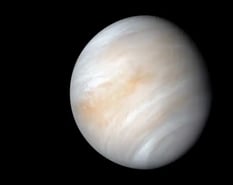
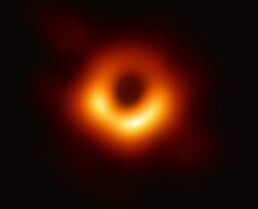

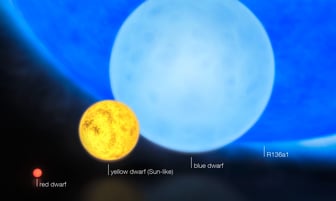



Explore More
Inspiration
Explore tips for fitness, decor, and wellness.
Connect
Discover
© 2024. All rights reserved.

